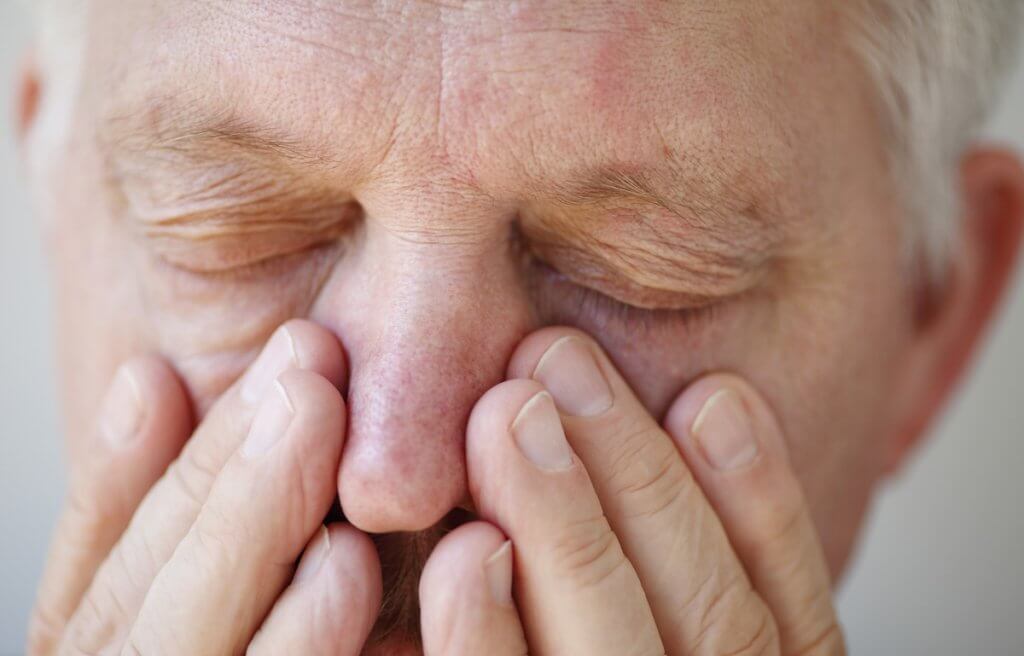- Find a Doctor
- Services & Specialties
-
-
Services & Specialties
-
-
-
-
- Find a Location
- News & Resources
-
-
News & Resources
- Latest News
- Learn More About Our Surgery Centers
- Why Proliance Surgeons?
- Meet Our Leadership
- Meet Our Board
- 24/7 Care Info
- Contact Us Today
- Pay My Bill
- Career Opportunities
- Mission, Vision, Values
- Phreesia FAQ
- Insurance Plans
- Medical Records
- Balance Billing Protection Act
- PELTO Health Partners
- Revenue Cycle Credit Resolution
- Proliance Surgeons Foundation
- Mental Health Resources
-
-
-
-
- Pricing
Rhinology Issues: Nasal & Sinus Conditions
Nose and sinus disorders, or rhinology issues, affect millions of people and can cause a range of symptoms, from headaches to breathing problems. While many nose and sinus disorders aren’t threatening, they can be uncomfortable and chronic, or lead to other issues that may be more harmful.
Rhinologists work with both ophthalmologists (eye specialists) and ENT doctors depending on the condition and treatment required for the disorder.

Common Rhinology Conditions & Problems
The inside of the nose is lined with tissues that create mucus to help trap tiny particles as you breathe and the sinuses are hollow spaces in the bones of the face that connect with the nose through the opening lined with mucus-making tissue. There are a host of conditions that can affect both the nose and sinuses, whether through the environment, trauma, or disease. Here are some of the most common nose and sinus problems:
- Rhinitis: the inflammation of the nasal lining. It can be classified into allergic rhinitis (caused by an allergic reaction to substances such as pollen, dust mites, or pet dander) or non-allergic rhinitis (caused by factors like irritants, infections, or hormonal changes).
- Sinusitis: the inflammation or infection of the sinuses. It can be acute (short-term) or chronic (long-lasting). Sinusitis often presents with symptoms such as facial pain, nasal congestion, headache, and nasal discharge.
- Nasal polyps: noncancerous growths that develop in the lining of the nose or sinuses. They can result in symptoms such as nasal congestion, runny nose, facial pressure, and a reduced sense of smell.
- Deviated septum: The septum is the wall of cartilage and bone that separates the nasal cavity into two halves. A deviated septum occurs when the septum is shifted to one side, obstructing one or both nasal passages. It can lead to nasal congestion, difficulty breathing, and recurrent sinus infections.
- Nasal fractures: broken bones in the nose, often caused by trauma or injury. They can result in symptoms such as nasal swelling, pain, difficulty breathing through the nose, and nosebleeds.
- Nasal tumors: Tumors can develop in the nasal cavity or sinuses, which may be benign (noncancerous) or malignant (cancerous). Symptoms can include nasal congestion, facial pain or pressure, nosebleeds, reduced sense of smell, and weight loss.
- Nasal vestibular stenosis: This condition involves the narrowing or obstruction of the nasal vestibule, the front part of the nasal passage. It can lead to nasal congestion, difficulty breathing through the nose, and recurrent nosebleeds.
- Rhinorrhea: Rhinorrhea refers to excessive nasal discharge or a runny nose. It can be caused by various factors, such as allergies, infections, or hormonal changes.
Common Symptoms
Rhinological disorders and conditions are usually very noticeable and have a range of symptoms that can mean several issues that would require a doctor to diagnose properly:
- a blocked or stuffy nose, making it difficult to breathe through the nose.
- excessive nasal discharge or a runny nose, which can be clear, thick, or colored.
- aching or pressure sensation in the face, particularly around the nose, forehead, or cheeks. This symptom is commonly associated with sinusitis and sinus-related issues.
- headaches, which can be localized or diffuse. Headaches often accompany sinusitis or nasal congestion.
- an impaired ability to detect and distinguish odors.
- the sensation of mucus dripping down the back of the throat, leading to a cough, sore throat, or hoarseness.
- sneezing
- swelling or puffiness in the face, particularly around the eyes, nose, or cheeks. This can occur in conditions such as sinusitis or nasal fractures.
- spontaneous bleeding from the nose, which may be minor or significant.
- persistent itching or discomfort in the nasal passages.
- difficulty breathing through the nose


